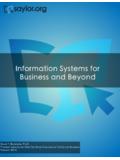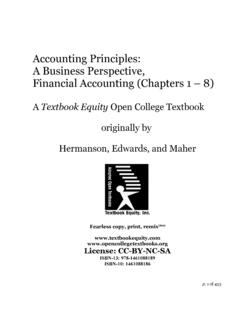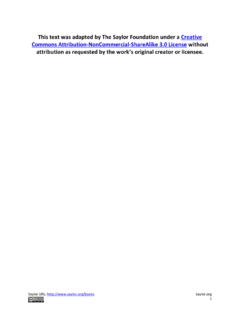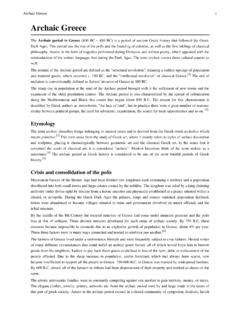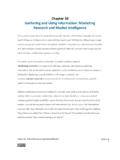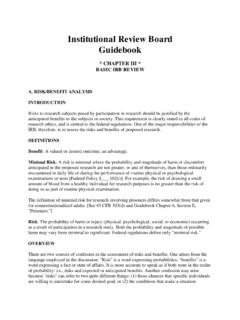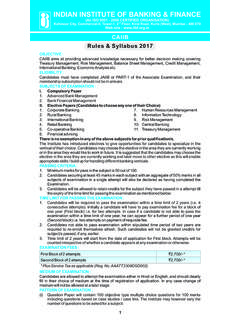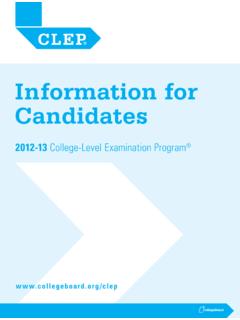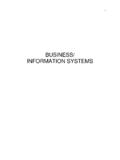Transcription of This text was adapted by The Saylor Foundation …
1 Saylor URL: 1 This text was adapted by The Saylor Foundation under a creative Commons attribution - noncommercial - sharealike license without attribution as requested by the work s original creator or licensee. Saylor URL: 2 Preface We have written a fundamentally different text for principles of economics, based on two premises: 1. Students are motivated to study economics if they see that it relates to their own lives. 2. Students learn best from an inductive approach, in which they are first confronted with a question and then led through the process of how to answer that question.
2 The intended audience of the textbook is first-year undergraduates taking courses on the principles of macroeconomics and microeconomics. Many may never take another economics course. We aim to increase their economic literacy both by developing their aptitude for economic thinking and by presenting key insights about economics that every educated individual should know. Applications ahead of Theory We present all the theory that is standard in books on the principles of economics. But by beginning with applications, we also show students why this theory is needed.
3 We take the kind of material that other authors put in applications boxes and place it at the heart of our book. Each chapter is built around a particular business or policy application, such as (for microeconomics) minimum wages, stock exchanges, and auctions, and (for macroeconomics), social security, globalization, and the wealth and poverty of nations. Why take this approach? Traditional courses focus too much on abstract theory relative to the interests and capabilities of the average undergraduate. Students are rarely engaged, and the formal theory is never integrated into the way students think about economic issues.
4 We provide students with a vehicle to understand the structure of economics, and we train them how to use this structure. A New Organization Traditional books are organized around theoretical constructs that mean nothing to students. Our book is organized around the use of economics. Saylor URL: 3 Our applications-first approach leads to a fundamental reorganization of the textbook. Students will not see chapters with titles like Cost Functions or Short-Run Fluctuations. We introduce tools and ideas as, and when, they are needed.
5 Each chapter is designed with two goals. First, the application upon which the chapter is built provides a hook that gets students attention. Second, the application is a suitable vehicle for teaching the principles of economics. Learning through Repetition Important tools appear over and over again, allowing students to learn from repetition and to see how one framework can be useful in many different contexts. Each piece of economic theory is first introduced and explained in the context of a specific application.
6 Most are reused in other chapters, so students see them in action on multiple occasions. As students progress through the book, they accumulate a set of techniques and ideas. These are collected separately in a toolkit that provides students with an easy reference and also gives them a condensed summary of economic principles for exam preparation. A Truly International Book International economics is not an afterthought in our book; it is integrated throughout. Many other texts pay lip service to international content.
7 We have taught in numerous countries in Europe, North America, and Asia, and we use that expertise to write a book that deals with economics in a globalized world. Rigor without Fear We hold ourselves to high standards of rigor yet use mathematical argument only when it is truly necessary. We believe students are capable of grasping rigorous argument, and indeed are often confused by loose argumentation. But rigor need not mean high mathematical difficulty. Many students even very bright ones switch off when they see a lot of mathematics.
8 Our book is more rigorous yet less overtly Saylor URL: 4 mathematical than most others in the market. We also include a math/stat toolkit to help students understand the key mathematical tools they do need. A Textbook for the 21st Century We introduce students to accessible versions of dynamic decision-making, choice under uncertainty, and market power from the beginning. Students are aware that they live in an uncertain world, and their choices are made in a forward-looking manner. Yet traditional texts emphasize static choices in a world of certainty.
9 Students are also aware that firms typically set prices and that most firms sell products that are differentiated from those of their competitors. Traditional texts base most of their analysis on competitive markets. Students end up thinking that economic theory is unrealistic and unrelated to the real world. We do not shy away from dynamics and uncertainty, but instead introduce students to the tools of discounted present value and decision-making under uncertainty. We also place relatively more emphasis on imperfect competition and price-setting behavior, and then explain why the competitive model is relevant even when markets are not truly competitive.
10 We give more prominence than other texts to topics such as basic game theory, statistics, auctions, and asset prices. Far from being too difficult for principles students, such ideas are in fact more intuitive, relevant, and easier to understand than many traditional topics. At the same time, we downplay some material that is traditionally included in principles textbooks but that can seem confusing or irrelevant to students. We discuss imperfect competition in terms of market power and strategic behavior, and say little about the confusing taxonomy of market structure.

